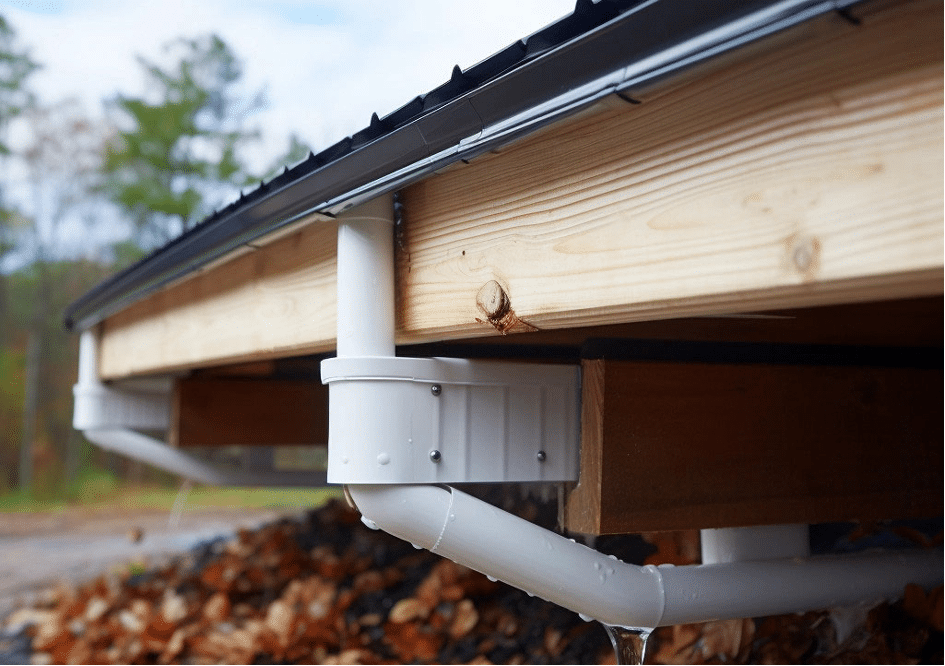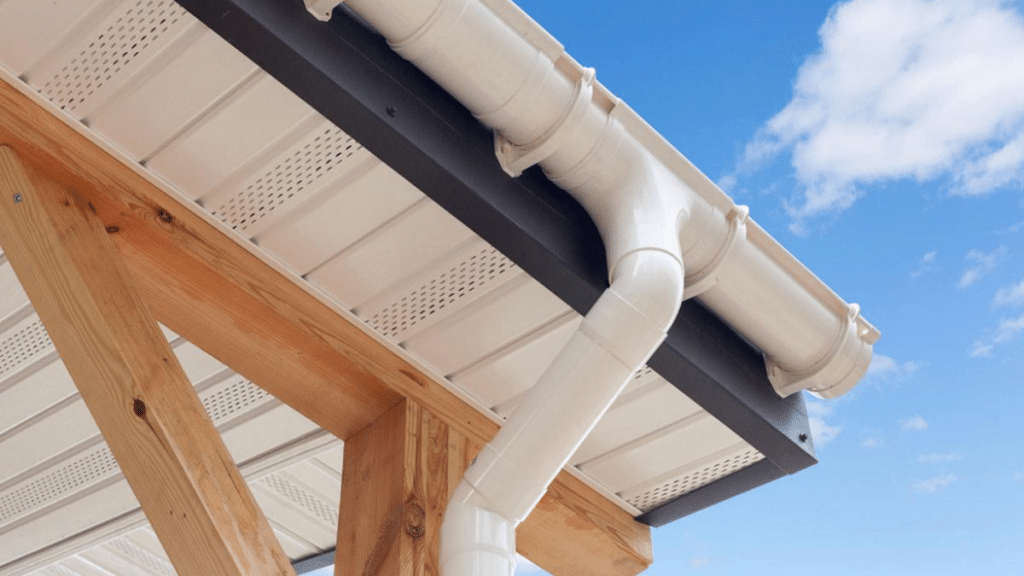PVC roof drain is one of the most basic waterproofing applications for structures and buildings. Depending on seasonal conditions, roofs are exposed to heavy rainfall occasionally. Heavy or long-term continuous rain can lead to severe water damage and costly repairs without a PVC roof drain.
The rainwater exposed to the building is collected with the rain water roof drain and discharged with the rainwater outlet pipe without penetrating the structure. Drainage work is a critical process for both building health and durability. While water insulation materials prevent water from entering the structure, roof drainage systems remove the collected water from the building using directional elements.
Understanding PVC Roof Drains
1. What Are PVC Roof Drains?
PVC roof drains fall within the components of a roof water drainage system and are specifically designed from Polyvinyl Chloride, which is a tough, plastic material. These drains are fitted in order to effectively channel wages from the roof to the rainwater outlet pipe or gutter system so that water does not accumulate on top of the roof and also cause leakages or any damages.
2. Advantages of PVC Roof Drains Compared to Other Materials
Resistance to Corrosion: PVC drain pipe does not conduct electricity. In this way, it is not affected by electrochemical reactions caused by acids, bases, and salts that cause corrosion in metals.
Lightweight: PVC, an easy-to-use material, allows roof drainage operations to be completed with minimum difficulty. PVC roof drain pipes are not heavy. Hence, less support is needed, so it reduces installation costs.
Cost-effective: The use of PVC conduits is also advantageous from an economic viewpoint. Raw materials and even labor costs are usually lower when using PVC roof drain pipes.
Easy Installation: Due to the features and shapes made of conic therein, PVC roof drains are less sculpted. Such drains can be well built within any roof drainage system so that there is minimal chance of leakage due to poor fitting.
How PVC Roof Drains Prevent Roof Leaks
1. Efficient Water Removal
Roof gutter systems effectively collect rainwater and remove it from the building. In this way, roof damage and water leaks due to water accumulation are minimized.
2. Seamless Installation Reduces Leak Risk
Roof water drain system installation is easy and practical. Thanks to its material structure, connection, and assembly points come together perfectly. In this way, the risk of leakage on your roof with PVC roof drain is reduced to zero.
3. Durability Against Environmental Factors
Weather events such as heavy rain, hail, and storms test the durability of roofs. External factors such as corrosion and acid shorten the life of drainage pipes. PVC drainage pipe has a lifespan of more than 50 years when used properly.
4. Clog Prevention and Smooth Water Flow
It is important to clean and maintain wastewater drainage systems regularly. The roof drain dome located on the PVC roof drain prevents large objects from passing through the gutter and clogging the pipe.
5. Overflow Protection Features
PVC roof drains are designed to transmit larger amounts of water to the outlet pipe more quickly than standard water pipes. Therefore, PVC roof drains minimize the risk of overflow.
LESSO’s PVC Gutters
LESSO is a promising brand of plastic pipes and fittings. With numerous years of experience in the market industry, LESSO supplies effective and long-lasting PVC gutters suitable for both home and industrial building drainage solutions. As affordable and dependable products, LESSO’s PVC gutters are easy to use, weather-resistant, and not easy to fade. Hence, they are ideal for any use, irrespective of the conditions.
Moreover, LESSO’s PVC gutters have also proved to be some of the most sought-after roof drainage systems. The products are made with high impact resistance and pressure resistance. Even if distorted by wind and snow, this product can also gain reconversion soon.

PVC Roof Drains Maintenance Guidelines
The durability and functionality of the PVC roof drainage system is dependent on how properly it is maintained. Below are some core suggestions:
1. Regular Inspection of the Drainage System
It is advisable to conduct periodic inspections on your drainage system for signs of wear, blockage or damage, more so after rainfall.
2. Clean Debris from the Drain Inlet and Pipes
Clogs must be removed from the drain inlet and pipes in order to enhance the flow of water. In this case, such materials include leaves and dirt.
3. Flush the Pipes to Prevent Blockages
Occasionally backwash the pipes to clear any deposit which could accumulate inside and obstruct free flow of fluids.
4. Check for Proper Water Flow
Pay attention to the water flow during rains. If the drainage seems too slow or the water drains too slowly from various floors and sections or the water accumulates, blockage is present somewhere in the system.
5. Replace Worn or Damaged Parts Promptly
If there is any damage on any of the parts of the drainage system, management of the drainage system should include replacing that part immediately to avoid bigger problems later.
Conclusion
Investing in a reliable drainage system is essential to prevent costly water damage and roof leaks. Proper maintenance and high-quality products, like those offered by LESSO, ensure long-term protection and efficient water management. LESSO’s durable PVC roof drains provide peace of mind and effective performance, making them a smart choice for safeguarding your property from potential water-related issues. So why are you waiting for? Come to contact them!

